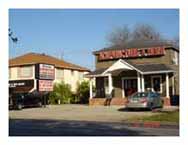|
☺Acupuncture Houston TX - West Holcombe Clinic |
☺Acupuncture Houston TX - South Shepherd Clinic |
 |
Houston Acupuncture and Herb Clinic at 2431 West Holcombe, Houston,
TX@ the
corner of Kirby
Drive and next to the Flower Corner.
7136665667 |
 |
Houston Acupuncture and Herb Clinic at South Shepherd Dr., Houston,
TX@ the
corner of Westheimer
Drive and next to the KFC. This location has been
servicing Houston for more than18 years. |
Click here for the West Holcombe Clinic location
map.
The clinic is located at the corner of
Kirby Drive and
next to the Flower Corner. ☺TEL:
713-666-5667. |
Click here for the
South Shepherd Clinic location map.
Acupuncture Houston TX-South
Shepherd Clinic
☺TEL: 713-529-8332. |
Acupuncture and Chinese medicine help hormone
imbalance,
high FSH, low progesterone, LH low, egg quality poor,
infertility, diabetes, irregular menstruation, miscarriage,
overweight, PMS, Diabetes.
Wen-Lung Wu, M.S., L Ac.,
PHD as Doctor of Medicine (China)
Jo-Mei Chiang, B.S. L Ac., Master of
Medicine (China)
Houston Acupuncture and Herb Clinic, Houston, Texas.
Acupuncture For Dysmenorrhea
Testimonials
 B.
C. I have started my menstruation at age 14, I have always had
cramping. B.
C. I have started my menstruation at age 14, I have always had
cramping.
Since I have started my menstruation at age 14,
I have always had cramping. The cramping has become increasingly
worse as I get older, and vary in the levels of pain - from medium
to severe. The one thing I could rely on in life was that I was
going to have cramping during my period.
In the past, my remedy has included Ibuprofen,
heating pad and sometimes bed rest. came to Dr. Wu for ovulation
and miscarriage treatment twice a week. As the end of my first
menstrual cycle drew near, I realized that I had not experienced any
of the PMS cramping I always experience.
The real testimony was during my menstrual
cycle; I also did not experience any cramping at all. I did not take
one Ibuprofen and did not use one heating pad, I am a believer in
this treatment. Thank you Dr. Wu!
Acupuncture and herb treatment are
effective for dysmenorrhea, especially for patients who
could not take any pain medicine or do not get relief with pain
medications. Acupuncture and herb treatments are the natural way to
relieve pain and tonify the bodily constitutions. Clinically,
acupuncture has been proven as an effective way to eliminate pain.
Dysmenorrhea refers to the
severe lower abdominal pain, swelling accompanied with back pain,
low back pain or some other discomforts before, during or after
menstruation.
The major symptom is the lower abdominal pain
that often occurs one to two days before or after menstruation. The
manifestations are spasm and pain in the lower abdomen, radiating to
the lumbar region, vagina or medial side of the legs. In severe
cases, it is accompanied with cold sweats, cold extremities, nausea,
vomiting, diarrhea, even fainting. Irritation of bladder such as
frequent urination, urgent urination, sometimes shows in rare cases.
The duration of pain usually lasts two to three
days and the first day of menstruation often has the most pain. Most
of the time, all the symptoms are relieved and disappear in a couple
of days after the first day of menstruation. Dysmenorrhea will
gradually diminish with increasing age and improve after marriage or
giving birth. Except in some complicated cases such as
endometriosis, pelvic inflammation, etc.
Clinically, dysmenorrhea is divided into two
categories, primary and secondary dysmenorrhea.
Primary dysmenorrhea means the symptoms started
with menarche. Usually there is no abnormalty of the female organs
in primary dysmenorrhea.
The symptoms first occurring later after
menarche is called secondary dysmenorrhea. Usually there are some
organ problems with secondary dysmenorrhea, such as endometriosis,
tumors, fibroids, adenomyosis, chronic pelvic inflammation, etc.
Primary dysmenorrhea often occurs among young
adolescence, it is easier to recover than the secondary dysmenorrhea.
Secondary dysmenorrhea often occurs among
women, between age 15 and 25 years old unmarried female, or married
with no history of pregnancy.
Chinese Medicine refers to
dysmenorrhea as lower abdominal pain with menstruation, abdominal
pain related to menstruation, menstruation pain. The earliest record
was seen in the classic Chinese medicine book, Jin Quei Yao Luei,
during the Han dynasty.
Etiology and pathogenesis of
dysmenorrhea in Chinese medicine:
The occurrence of dysmenorrhea has a close
relationship with the monthly changes in between the Zen and Chong
meridians, and the uterus. The main cause is due to pathogenic
invasion and constitutional deficiency of Qi and blood. During
menstruation or right after pregnancy, the extreme physical change
causes the obstruction of Qi and blood in the uterus as well as the
Zen and Chong meridians. It results in the blockage of the uterus,
this blockage produces the pain in the lower abdomen and lower back.
The causes of Dysmenorrhea are from the Zen and
Chong meridians, and the uterus, the changes are in the blood and Qi,
the appearance is the period before, during and after the
menstruation. In Chinese medicine the differentiation of syndromes
of dysmenorrhea is divided into excessive and deficiency types.
Differentiation of syndromes:
Differentiation of syndromes relies on the
nature onset of dysmenorrhea,:
- the onset time, location and the degree of
pain,
- the color, the quantity and texture of
menses,
- tongue color and pulse conditions.
1. Qi stagnation and blood
stasis
a. Emotional factors such as anger,
depression, anxiety, etc, always causes liver damage. The liver Qi
is obstructed by the emotional upheavals and fails to transport the
blood, blood stasis therefore occurs.
b. After menstruation or delivery, the
clots or blood in the uterus are not completely expelled and forms
stasis. The stagnation and stasis obstructs the flow of body Qi and
blood and causes pain.
Main symptoms: lower abdominal
pain one to two days before menstruation Pain and tenderness in the
breast, hypochondria pain. Irregular and scanty menstruation,
accompanied with dark color blood clots. Symptoms relieved after
clots are expelled. Tongue color is purplish with spots on the
edge. Pulse is deep and taut.
Treatment method: Smooth liver
Qi, activate blood flow, resolve stasis and relieve the pain.
Chinese herb treatment:
Ger Xia Zhu Yu Tang, or Xue Fu Zhu Yu tang, or Wu Zhu Yu Tang, etc.
2. Coagulation of cold dampness
Before or during the menstrual cycle, patient
prefers cold drink or ice drink, exposure to cold and damp pathogen
such as walking in the rain with no umbrella, swimming in cold
water, eating cold food. The cold pathogen invades the Ren and
Chong meridians, and stays in the uterus to block the Qi and blood
circulation and caused pain.
Main Symptoms: Lower abdominal
cold pain before or during menstruation. Symptoms relieved with
warmth. Scanty menorrhea with dark color blood clots. Aversion to
cold, loose stool. Tongue coating is white, pulse is deep.
Treatment method: Warm Ren and
Chong meridians and the uterus. Dissipate cold and dampness to
eliminate stagnation.
Chinese herb treatment:
Wen Jing Tong, Shao Fu Zhu Yu Tong or Shen Hua Tang.
3. Down ward invasion of
excessive damp heat from pathogen
a. Patient constitutionally has
excessive body heat. The excessive heat flows downwards towards the
Ren and Chong meridians to block the Qi and blood circulation.
b. Invasion of damp heat pathogen after
the giving birth or miscarriage. The excessive damp heat
accumulates in the Ren and Chong meridians and uterus to block the
Qi and blood circulation and causes the pain.
Main Symptoms: lower abdominal
pain and fullness before and during the menstruation. Bright red
heavy menstruation with some clots. Normally patient also has
smelly yellow vigina mucus. Tongue coating is yellow and slippery,
pulse is rapid.
Treatment method: clearing the
damp heat and regulating the circulation of Qi and blood.
Chinese herb treatment:
Chin Re Tiao Xiu Tang.
4. Qi and blood deficiency
a. Constitutionally Qi and blood
deficient, or prolonged illness or with serious illness depleting
the Qi and blood and body essence.
b. Poor digestive function of spleen
and stomach, the body lacks nourishment, Qi and blood become
deficient. In Chinese medicine lack of nourishment could cause
pain.
Main Symptoms: dull abdominal
pain accompanied with sinking sensation before or after
menstruation. Symptoms eliminated with pressure. Scanty menses
with light color. Fatigue, pale, dizziness insomnia and
palpitation. Tongue color is pale with white thin coating, pulse is
thin and weak.
Treatment method: Tonify the
Qi and blood, strengthen the spleen and stomach function.
Chinese herb treatment:
Ba Zhen Tang, Ren Shen Yang Rong Tang, or Huong Qi Quai Zhu Wu Wu
Tang.
5. Liver and kidney deficiency
a. Constitutionally deficiency of Liver
and Kidney function.
b. Abusive sexual life or frequent
childbirth impairs the liver and kidney.
Once the liver could not store enough blood to
replenish the Ren and Chong meridians, the uterus then lacks
nourishment, pain occurs afterwards.
Main symptoms: dull abdominal
pain with scanty menses. No blood clots. Aches and pain in the
lumber region, dizziness, vertigo, tinnitus. Tongue color is light
with white thin coating, pulse is thin.
Treatment method: Nourish the
liver and kidney and generate the blood and essence.
Chinese herb treatment:
Tiao Gen Tong.
Acupuncture treatment for dysmenorrhea:
Body acupuncture treatment:
Zhu San Li, Shen Yu, San Yin Jiao, zhong Ji, Tai Chong, Xiu Hai,
Quan Yuan, Yang Ling Chuan, Pi Yu, Gan Yu, etc.
Ear acupuncture treatment:
endocrine, shen men, liver, kidney, etc.
|

